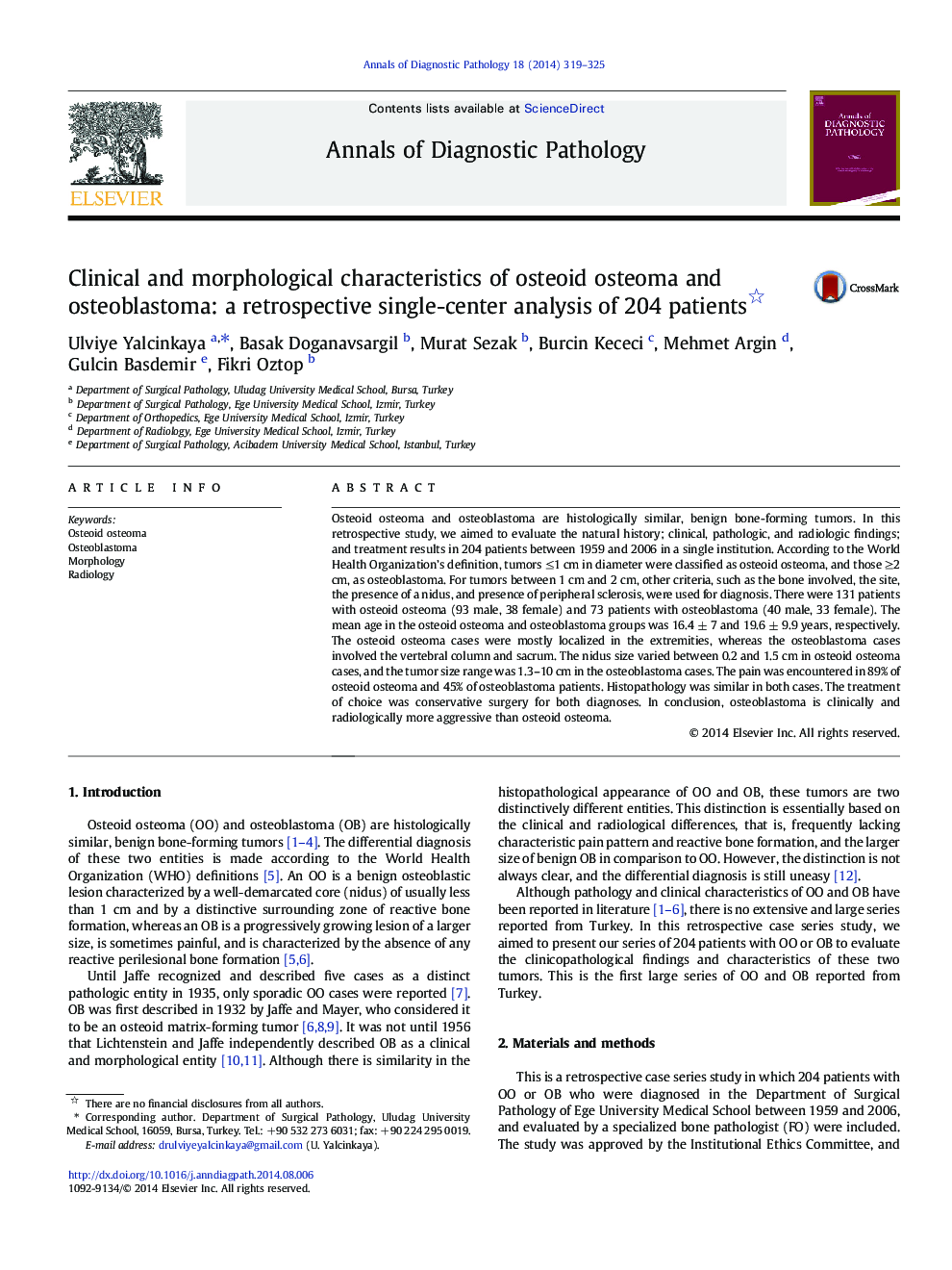| Article ID | Journal | Published Year | Pages | File Type |
|---|---|---|---|---|
| 6214964 | Annals of Diagnostic Pathology | 2014 | 7 Pages |
Osteoid osteoma and osteoblastoma are histologically similar, benign bone-forming tumors. In this retrospective study, we aimed to evaluate the natural history; clinical, pathologic, and radiologic findings; and treatment results in 204 patients between 1959 and 2006 in a single institution. According to the World Health Organization's definition, tumors â¤1 cm in diameter were classified as osteoid osteoma, and those â¥2 cm, as osteoblastoma. For tumors between 1 cm and 2 cm, other criteria, such as the bone involved, the site, the presence of a nidus, and presence of peripheral sclerosis, were used for diagnosis. There were 131 patients with osteoid osteoma (93 male, 38 female) and 73 patients with osteoblastoma (40 male, 33 female). The mean age in the osteoid osteoma and osteoblastoma groups was 16.4 ± 7 and 19.6 ± 9.9 years, respectively. The osteoid osteoma cases were mostly localized in the extremities, whereas the osteoblastoma cases involved the vertebral column and sacrum. The nidus size varied between 0.2 and 1.5 cm in osteoid osteoma cases, and the tumor size range was 1.3-10 cm in the osteoblastoma cases. The pain was encountered in 89% of osteoid osteoma and 45% of osteoblastoma patients. Histopathology was similar in both cases. The treatment of choice was conservative surgery for both diagnoses. In conclusion, osteoblastoma is clinically and radiologically more aggressive than osteoid osteoma.
